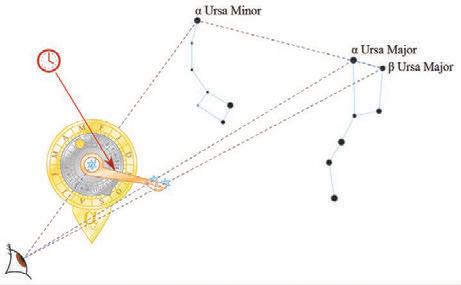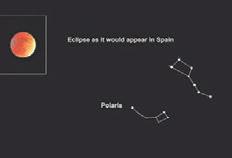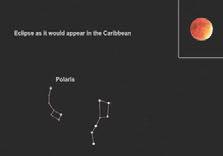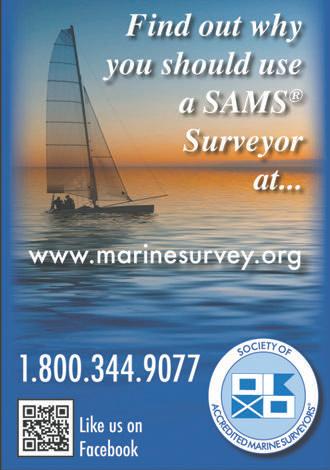
12 minute read
max ebb: goodbye columbus
Even though I'm mostly working done some nasty stuff to the Arawaks "Well, Columbus could use a crossat home these days, my company still and Caribs, but don't you have to admit staff," I said. "Even that statue shows expects me to be at my desk. But we he was a great navigator?" him with one." also get Columbus Day off, so I was "No way, Max," she answered, shak- "That’s the thing, Max. I don't think free to take one of my newly discovered ing her head. "Even for his own time, he could use a cross-staff. And actually favorite long walks, through the nearby he was a total schnook. Read up on the he had a quadrant and an astrolabe, university campus. I used to avoid it for mutinies, and why he came home from but no cross-staff, and the backstaff the crowds, but with most of the classes his third voyage as a prisoner in chains." wasn't invented yet. His log from the online this semester and the dorms less "But as a visionary and a navigator first trip shows major confusion, with than half full, it's a very pleasant, park- …" observations that he believed put him like environment. So it was with much "Wrong again, Max. He might have at 40-something latitude instead of 20surprise that I came upon a fairly large been OK at dead reckoning, but his something. It's all in his log. That's not crowd assembled in front of the Geog- vision was all wrong and his naviga- just experimental error; he didn't know raphy Building. tion sucked. For crossing an ocean, he how to read the thing. There's credible
It didn't take long to discover what couldn't navigate his way out of a 15th- speculation that he was reading from was going on. The object of all the atten- century paper bag." the quadrant's tangent scale instead of tion was a small statue of Christopher I was about to point out that he did from the angle scale." Columbus. He was holding a cross-staff, manage to make four trips to the Carib- "Well, I've made the same mistake on the 15th-century forerunner of the sex- bean, but Lee cut me off with the real my slide rule," I confessed. "During an tant. story. exam. Right in that building over there,
Advertisement
Of course, there is no such thing as "He was clueless about the actual in fact." "Columbus Day" on campus. It's "Indig- size of the Earth," Lee explained. "He "Later in 1492, probably in Haiti," enous Peoples Day," and the statue had rejected the science, instead treating Lee added, "he recorded a latitude as 34 to be dealt with. The main issue degrees when he was really at 19." on the agenda, according to the "That's pretty bad for a noon speaker standing on the building's front steps, barely comprehensible "Back to the accomplishments sight," I agreed. "But ol' Chris never sorted it through an improvised portable of Columbus," I said. "Dubious out," Lee insisted, "and he gave amp, was deciding on the most appropriate way to deface this symbol or otherwise. Isn't he the only up on noon sights during that first voyage. Point is, he did not underof brutal colonial oppression. But the amplified voice had person in history to actually pull stand the data that indicated the real size of the Earth, even then. something familiar about it, and off the infamous lunar-eclipse So he actually believed it was only suddenly I realized that I knew who was behind that Hawaiian-print scam? Seems he deserves some a couple of thousand miles across the Atlantic to the Orient, and he face mask. The speaker was none other than Lee Helm, a graduate recognition, good or bad, for sold the idea to his sponsors." "And the rest," I said, "is hisstudent in naval architecture and that stunt." tory. He cruised around the Caa racing navigator in demand. ribbean searching for the Spice "We could, like, replace that Islands and other commercial cross-staff with a globe," she implored the ancient texts from Marinus of Tyre resources of the Far East with no luck." the crowd. "But it would be a special and Claudius Ptolemy as gospel. Tyre "But wait, there's more. Columbus globe, only about 12,000 miles in cir- proclaimed the Eurasian land mass fraudulently tried to cover it up. There cumference, and totally leave out the spanned 15 hours of longitude, leav- was a lunar eclipse on September 15, Americas, North and South. It's the ing only nine hours, which is like, 135 1494, on the second voyage. Columbus globe that Columbus imagined, with the degrees of longitude, for the size of the knew the predicted local time of the Far East like, just a couple thousand Atlantic Ocean between Europe and eclipse back in Europe." miles west of Europe. We could expose Asia." "Wait, Lee. You're saying he couldn't him as one of the poorest excuses for a "But did anyone back then really figure out noon sights, but could predict navigator in all of maritime history!" know?" I asked, noting that Lee pro- an eclipse?"
However, the crowd wanted to do nounced both the P and the t in Ptolemy. "Like no way. He didn't figure this something a lot less subtle, like cut off "Like, for sure. Measuring the angle out himself. Had a copy of Johann his hands or bind the statue in chains. of the sun above the horizon at noon Müller's ephemeris from 1474, which I took a bearing on Lee when she dis- is not hard, especially if you're on land predicted lunar eclipses within about appeared into the mob, estimated course where you can be precise with a plumb 20 minutes." and speed, tightened the elastics on my bob and a quadrant. And every naviga- "They could do that in 1494, even N95, and pushed through the crowd on tor who could use a cross-staff knew though they still thought the Earth was an intersecting course. that the sun at noon measured one the center of the universe?" I remem"Good speech, Lee," I said when I fi- degree lower in the sky for every 60 bered some of this history. "Copernicus nally maneuvered into hailing distance. miles they moved to the north. So the didn't publish his heliocentric view of "But don't you think perhaps we could fact that the Earth was about 21,600 the solar system till 1543." judge historical figures in the context of nautical miles around was no secret to Lee explained that as far as celestial their own time? Columbus might have anyone who bothered to check it out." navigation and the early versions of


Top Diagram: How to use the nocturnal to estimate local time at night. Set the outer ring for the date, and line up the arm with the pointer stars. Bottom diagrams, l to r: Finding longitude via lunar eclipse. The eclipse is observed simultaneously everywhere. The time of the eclipse is predicted for Cadiz, Spain. But in the Caribbean, the sidereal time is about four hours earlier, as measured with the nocturnal, which means the observer is west of Cadiz by 60 degrees of longitude. The method is accurate to within a few hundred miles, but Columbus reported the time difference as 10 hours, not four, to make it seem as if he was a lot closer to the Far East.
the Nautical Almanac are concerned, putting the Earth at the center of the universe works just as well as putting the sun at the center of the solar system. Copernicus wasn't any more accurate than Ptolemy. It took Kepler, publishing in 1609, to fix everything with his elliptical orbits. "OK," I said, bringing the topic back on course. "There's an eclipse coming. Is this when he fooled the indigenous people into supporting his marooned crew, threatening that he was going to take away the moon?" "No, that came later, on the last trip in 1504. This first eclipse was his first definitive check on the longitude of the Americas. And he totally faked it." "How do you get longitude from an eclipse," I asked, "if you don't have a chronometer?" "The eclipse is the time signal, Max. A lunar eclipse is visible from about half the Earth, and the total eclipse starts and ends at almost exactly the same time for everyone who can watch. So it's a global time signal." "But I still don't see how …" "Here's how it works," Lee interrupted. "The eclipse happens at the same time everywhere, but the local time depends on longitude. If the eclipse happens at midnight in Cadiz, it will still be 8 p.m. in Jamaica. If you know what time the eclipse is predicted to start in Europe, which you look up in your trusty German ephemeris, and if you can determine your local sidereal time to, like, the nearest 30 minutes, then you have your longitude to the nearest 7.5 degrees of longitude, or 450 miles." "Better than being off by 5,000 miles, I suppose." "Back to our story. Columbus' log says he put into a bay on Hispaniola for protection from a storm. It was the night of a predicted lunar eclipse, but like, there was a storm: In all probability it was overcast. Various navigators in the fleet reported various longitudes, all wrong. They were actually 62.5 degrees west of Cadiz, so the local time difference from Cadiz should have been four hours and 10 minutes. Most of the times were something over five hours, fudged to agree with their DR. But then in 1503, Columbus reported to Ferdinand and Isabella that he had sailed to a longitude west of Cadiz by a full 10 hours of longitude! Converting time to longitude, that would have put him at 150 degrees west of Cadiz, or almost halfway around the world and clearly in Asian waters. He needed to make it look like he was really much farther west around the planet and much closer to the Far East. But still not far enough. Japan is actually about 213 degrees west of Cadiz, so he still needed another four hours of sidereal time difference." "Hang on, Lee," I said. "I'm still not sure how this 'sidereal time' gets us the longitude." "Sidereal time is just the time based on the apparent rotation of the stars around the Earth, instead of the sun. You know how, like, without a clock or even a compass, you can sort of tell time by the sun? Not very accurate but it works. It would work a lot better if you could see the North Star during the day, to see the center of this solar clock. Using the stars at night solves this problem. Even if you can't see Polaris, you can figure out where it should be from other constellations around it. Like, for example, the pointer stars of the Big Amazon Shopping Cart — formerly known as the Big Dipper. The pointer stars are like the hour hand of a celestial clock." "You can't always see the cart at night," Lee continued, "depending on the time of year and the latitude. So it's also useful to use the Golden Arches, formerly known as Cassiopeia, positioned on the opposite side of the North Star from the shopping cart. And one more thing about sidereal time: A year has one more sidereal day than solar day, because the stars move around the Earth a little faster than the sun. Twenty-three hours and about 56 minutes per sidereal day." "Now why would that be?" I pondered. "I'll leave that as a homework problem," Lee answered as she made a circular stirring motion with her finger, while moving the hand with the rotating finger slowly around the other hand, which was clenched in a fist. "But we're not done," Lee continued. "Columbus did have a widget called a nocturnal, or a 'horologium nocturnum,' meaning night-time clock. This looks a
little like a cross between an astrolabe and a sundial, but it's really just a device to measure the angle of certain 'hour hand' stars that rotate around Polaris. Set the inner ring for month and approximate date, line it up with Polaris, and move the arm to the same angle as the star of interest. You can read off the local time, and it works all night as long as the sky is clear." "If I'm visualizing this thing correctly," I said, "the precision of the arm you set on the nocturnal is the same as the angular precision in your longitude measurement, if you're timing an eclipse." " 'Zactly," Lee confirmed. "The stars go 360 degrees around the pole every day, and the Earth has 360 degrees of longitude. Human eyes are pretty good at estimating when a line is horizontal, so if you wait till one of those 'hour hand' stars is at three or nine o'clock, and time that from the time of the eclipse with a well-calibrated sandglass, you can get a good enough longitude to know which side of which ocean you're on."
"Back to the accomplishments of Columbus," I said. "Dubious or otherwise. Isn't he the only person in history to actually pull off the infamous lunar eclipse scam? Seems he deserves some
recognition, good or bad, for that stunt." "That's the story," said Lee. "In 1504, on his fourth and last voyage, he was marooned on Jamaica. The Arawaks were fed up with taking care of this barbarian and what was left of his crew, so Columbus, knowing a lunar eclipse was coming, threatened to take away their moon unless they continued supplying him with provisions. They gave in during the total eclipse, and, like, as promised, Columbus made some incantations and brought the moon back for them." "That's enough to earn him a place in history as one of the world's greatest con artists," I said.
Lee saw it differently: "I think that story is, like, about as likely to be true as Slocum's carpet tacks. Lunar eclipses are not that rare, and people who don't live inside buildings are certainly familiar with them. Even the most Paleolithic hunter-gatherer, I gotta believe, would be like 'Cool, another eclipse!' and not be scammed by some ugly Europeans who don't even know how to feed themselves on a rich tropical island..."
We heard a crash, and then a cheer, and looked back at where the statue had been. "Well, he's had a good run," I said. "Way too good," said Lee. — max ebb


SAUSALITO’S BOUTIQUE MARINA
• 80 SLIPS FROM 20’ TO 40’ WITH POWER AND
DOCK BOXES AT EACH SLIP • FREE WATER AND HIGH SPEED WI-FI • SUP, KAYAK AND OC-1 STORAGE WITH 24/7 ACCESS
www.bluewateryachtharbor.com chris@bluewateryachtharbor.com 55 Liberty Ship Way Sausalito, CA 94965
415.289.0135











